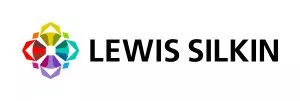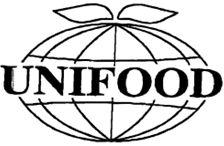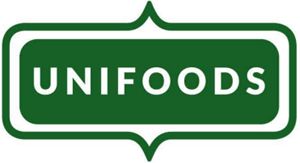- within Intellectual Property topic(s)
- within Cannabis & Hemp, Law Practice Management and Privacy topic(s)
The UKIPO has dismissed an opposition brought by Unifood Import A/S against Unisnacks Europe Limited (O/0799/25), finding that the opponent failed to demonstrate genuine use of the trade mark registration in which it relied. The case offers important reminders about evidence, translation requirements, and the changing significance of EU use in the UK following Brexit.
|
|
|
| The Unifood Mark | The Unisnack Mark |
The opposition
Unifood's opposition was based on its earlier registration for the Unifood Mark. This registration was a comparable UK trade mark created from a European Union Trade Mark (EUTM). A "comparable trade mark" is a UK national trade mark that was automatically created by the UK Intellectual Property Office (UKIPO) on 1 January 2021, following the end of the Brexit transition period. This was done to ensure that owners of existing EUTMs would not lose protection for their marks in the UK after Brexit.
As the Unifood Mark had been registered for more than five years, Unifood was required to prove genuine use of the mark for the goods and services covered by the registration during the relevant period (21 December 2017 – 20 December 2022, being the five year period leading up to the date of Unisnacks application for their mark). This date range includes periods of use both pre-Brexit and within five years post-Brexit, which made it possible for the opponent to rely on use in the EU. This meant that Unifood could, should it wish, file evidence of use of the Unifood Mark from the European Union.
The Hearing Officer applied the statutory framework under sections 5(2)(b) and 6A of the Trade Marks Act 1994, together with Schedule 2A, which governs comparable marks. The decision also drew on established case law, including Ansul (C-40/01) and La Mer (C-259/02), both of which set out the principles of genuine use, and more recent UK authority such as easyGroup v Nuclei [2023] EWCA Civ 1247.
Evidential weaknesses
Unifood's evidence was beset with problems. Translations of Danish-language material were initially provided using Google Translate and only replaced later with official versions, after the Tribunal intervened. While those translations were eventually accepted, the episode highlights how procedural missteps can undermine an otherwise straightforward case.
Timing also proved critical. A number of documents fell outside the relevant five-year window for which proof of use had been requested. The Tribunal noted that although such evidence can provide useful context, it does not itself demonstrate genuine use within the relevant period.
Perhaps most damagingly, the material presented did not show that the trade mark was being used directly on the goods claimed. The evidence suggested instead that the mark served to identify the Unifood's wholesale or retail business, not the origin of the products themselves. Indeed, it was noted that each of the products seemed to have their own marks, and that from the evidence it seemed like the Unifood Mark was being used to bring together and market online the goods from different undertakings.
The decision is a reminder that tribunals expect to see the mark on packaging or on the goods themselves, not simply on websites, invoices or order forms.
The Tribunal also noted the absence of key forms of evidence: there were no sales figures, no packaging samples, and invoices did not describe the goods with reference to the trade mark. Overall, the evidential picture was too weak to show genuine use.
The Brexit dimension: when EU use counts
In this case, part of the relevant period for proving genuine use occurred before 1 January 2021, which meant the opponent was permitted to rely on EU use under the transitional provisions. That safety net will not be available for much longer.
From 1 January 2026, it will be five years since the Brexit trade mark transition period ended. This means that EU evidence will no longer be relevant for proof of use in opposition proceedings to applications with a filing or priority date next year.
Revocation actions, however, follow a slightly different path. In those cases, it may be possible to select a variety of non-use periods, and EU use could still have relevance where the challenged period includes dates that precede Brexit and/or are within the five-year period following the end of transition date, 1 January 2021 – 31 December 2025. For oppositions, the direction of travel is clear: brand owners must be ready to prove UK use.
Outcome
The Hearing Officer concluded that genuine use of the earlier mark had not been shown for the goods in question. As a result, the opposition failed entirely and the application will proceed to registration.
On costs, the applicant was awarded £800, assessed in line with the scale set out in Tribunal Practice Notice 1 of 2023. Costs before the UKIPO are awarded on a contributory basis: they are designed to offset some of the expense of defending proceedings, but rarely come close to covering the true costs incurred at the registry.
Key takeaways for brand owners
Plan for proof: Don't wait until you need evidence in proceedings. Collect and retain sales invoices, catalogues, marketing material, packaging samples, website screenshots (with dates), and advertising spend data as a matter of course.
Keep evidence in date order: Tribunals place weight on material that clearly falls within the relevant five-year period.
Show use on the goods: Where possible, ensure the mark is used prominently on packaging, labels or directly on goods — not just in invoices or order forms.
Think Brexit-proof: For oppositions at the UKIPO, be ready with UK-specific evidence. EU-based material will soon cease to carry weight in that context, though it may still be relevant in some revocation proceedings. Similarly, for EUTM owners, who have only used their mark in the UK, there is a risk that the registrations will become vulnerable to revocation if they are not used in the EU quickly as evidence of use from the UK will cease to be relevant from 1 January 2026.
This case underlines that genuine use is tested by reference to commercial reality, not legal formality. Businesses that invest in systematic record-keeping today will be far better placed to defend their trade marks tomorrow.
The content of this article is intended to provide a general guide to the subject matter. Specialist advice should be sought about your specific circumstances.




